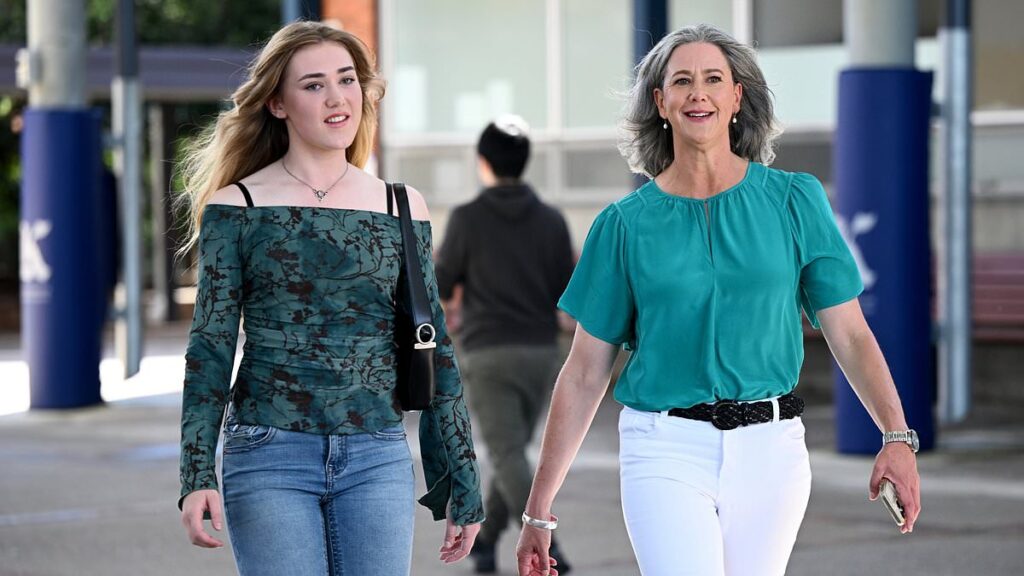- Teal candidate leading by four votes
A Teal candidate on Sydney’s north shore is leading by just four votes in Australia’s tightest election race in more than 100 years.
Independent Nicolette Boele was just four votes ahead of her Liberal rival Gisele Kapertarian in the seat of Bradfield with 100 per cent of the vote counted.
This is shaping up as Australia’s tightest race since 1919 when Labor lost Ballarat in regional Victoria by one vote.
The Australian Electoral Commission automatically recounts votes if the margin is less than 100.
A narrow lost in Bradfield, after a recount, would see the Liberal Party lose a seat it has held continuously since it was created in 1949, in an area that had been home to three Liberal premiers and a federal Opposition leader.
This would also see the Liberal Party have no federal seats on Sydney’s wealthy north shore east of the Lane Cove River, having been wiped out on the northern beaches and the eastern suburbs by Teal candidates at the 2022 election.
In an unusual political situation, Labor now has a safe seat on the north shore, Bennelong, while the Liberal Party has been wiped out in its traditional heartland.
Boele, a clean energy executive, had 56,195 votes, after preferences, compared with 56,191 for Kapertarian, a corporate lawyer.
A Teal candidate on Sydney’s north shore is leading by just four votes in Australia’s tightest election race in more than 100 years (pictured is Nicolette Boele)
But when it came to primary votes, the Liberal Party had a 38 per cent share compared with 27 per cent for the Teal, who had benefited from Labor and Greens preferences.
This was Ms Boele’s second attempt to win Bradfield, after she unsuccessfully challenged former Liberal frontbencher Paul Fletcher in 2022.
Her 3.4 per cent swing in 2025 was much weaker than her 12.3 per cent swing three years ago, following a scandal at a Gordon hair salon.
Bradfield had also been the only federal Liberal electorate in 2023 to vote for the Voice and Ms Kapterian had beaten leading No campaigner Warren Mundine for Liberal preselection.
Even within the Bradfield electorate, Labor won the primary vote at polling booths on the lower north shore, including at St Leonards and Chatswood.
This gave Boele 60 per cent of the two-party vote after preferences in these booths with high-rise apartments and a higher proportion of Chinese voters.
But Boele had won the primary vote in booths like South Turramurra, giving her 58.6 per cent of the vote after preferences in a bushland suburb with very few units and mainly houses.
The Liberal Party, however, won the St Ives booth with 52.8 per cent of the vote after preferences, in a suburb where 8.1 per cent of voters are Jewish compared with the national average of just 0.4 per cent.
Independent Nicolette Boele was just four votes ahead of her Liberal rival Gisele Kapertarian (pictured) in the seat of Bradfield with 100 per cent of the vote counted
The Bradfield electorate was redrawn to stretch from Wahroonga to Northbridge following the abolition of the Teal seat of North Sydney.
The Liberal Party now has just five federal seats in metropolitan and outer Sydney – Berowra, Mitchell, Lindsay, Cook and former shadow treasurer Angus Taylor’s redrawn electorate of Hume.
Just eight state Liberal electorates now overlap with a federal Liberal seat in New South Wales, including in Opposition Leader Sussan Ley’s seat of Farrer.
Bradfield’s former MPs have included a previous Liberal leader, Brendan Nelson, and a former prime minister Billy Hughes, who had defected from the Labor Party during World War I over conscription.
The federal seat also overlaps with the former Liberal state seat of Ku-ring-gai that had been held by Liberal premiers Barry O’Farrell and Nick Greiner, and Willoughby previously held by Gladys Berejiklian.
